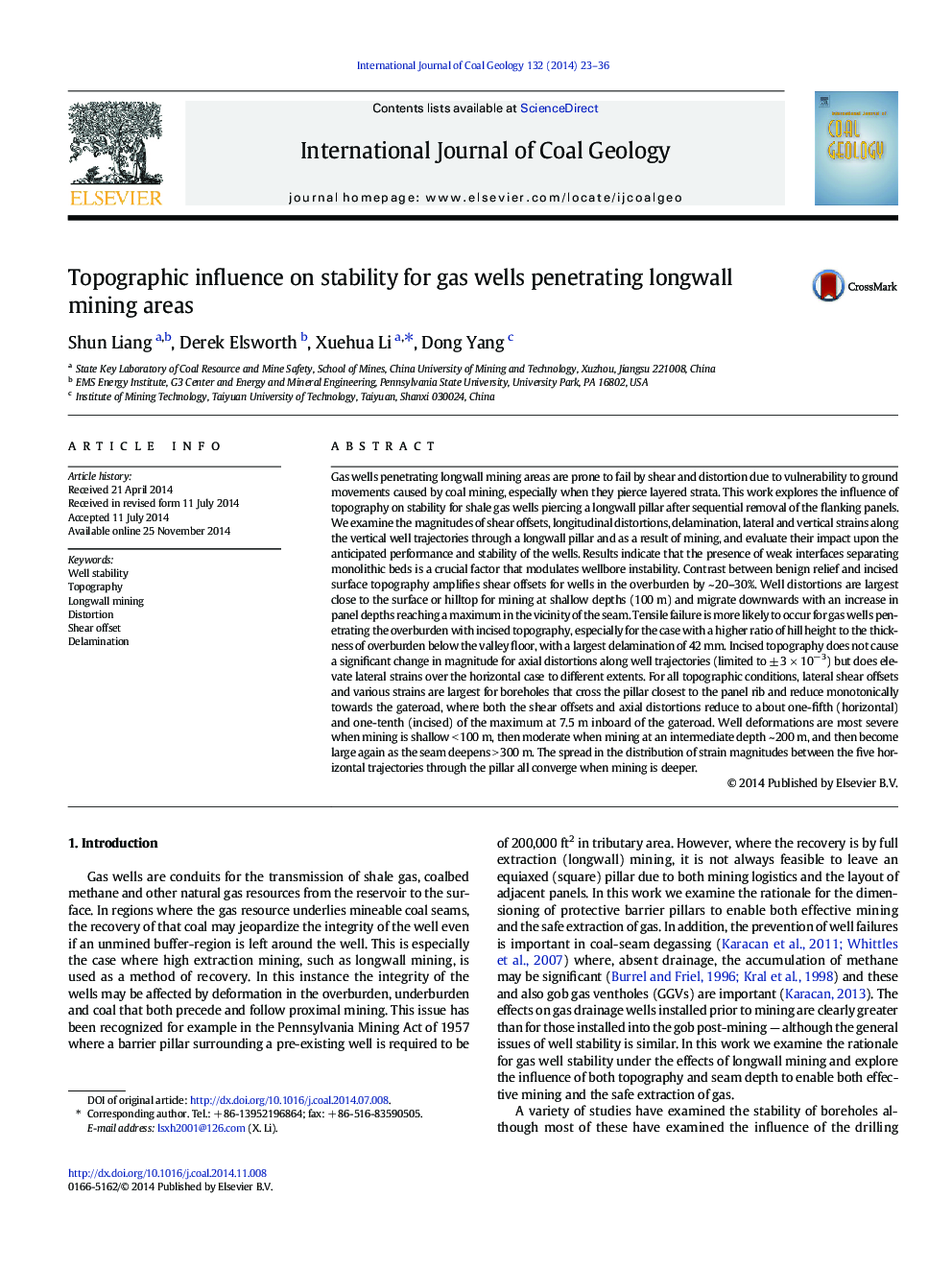| Article ID | Journal | Published Year | Pages | File Type |
|---|---|---|---|---|
| 1753208 | International Journal of Coal Geology | 2014 | 14 Pages |
•Shear offset and distortion are the two principal patterns of gas well failure.•Weak interfaces between strong-weak layers significantly affect well stability.•Incised topography amplifies impacts on gas well deformations.•Wells are prone to failure in layers close to the seam and ground surface/hilltop.
Gas wells penetrating longwall mining areas are prone to fail by shear and distortion due to vulnerability to ground movements caused by coal mining, especially when they pierce layered strata. This work explores the influence of topography on stability for shale gas wells piercing a longwall pillar after sequential removal of the flanking panels. We examine the magnitudes of shear offsets, longitudinal distortions, delamination, lateral and vertical strains along the vertical well trajectories through a longwall pillar and as a result of mining, and evaluate their impact upon the anticipated performance and stability of the wells. Results indicate that the presence of weak interfaces separating monolithic beds is a crucial factor that modulates wellbore instability. Contrast between benign relief and incised surface topography amplifies shear offsets for wells in the overburden by ~ 20–30%. Well distortions are largest close to the surface or hilltop for mining at shallow depths (100 m) and migrate downwards with an increase in panel depths reaching a maximum in the vicinity of the seam. Tensile failure is more likely to occur for gas wells penetrating the overburden with incised topography, especially for the case with a higher ratio of hill height to the thickness of overburden below the valley floor, with a largest delamination of 42 mm. Incised topography does not cause a significant change in magnitude for axial distortions along well trajectories (limited to ± 3 × 10− 3) but does elevate lateral strains over the horizontal case to different extents. For all topographic conditions, lateral shear offsets and various strains are largest for boreholes that cross the pillar closest to the panel rib and reduce monotonically towards the gateroad, where both the shear offsets and axial distortions reduce to about one-fifth (horizontal) and one-tenth (incised) of the maximum at 7.5 m inboard of the gateroad. Well deformations are most severe when mining is shallow < 100 m, then moderate when mining at an intermediate depth ~ 200 m, and then become large again as the seam deepens > 300 m. The spread in the distribution of strain magnitudes between the five horizontal trajectories through the pillar all converge when mining is deeper.
